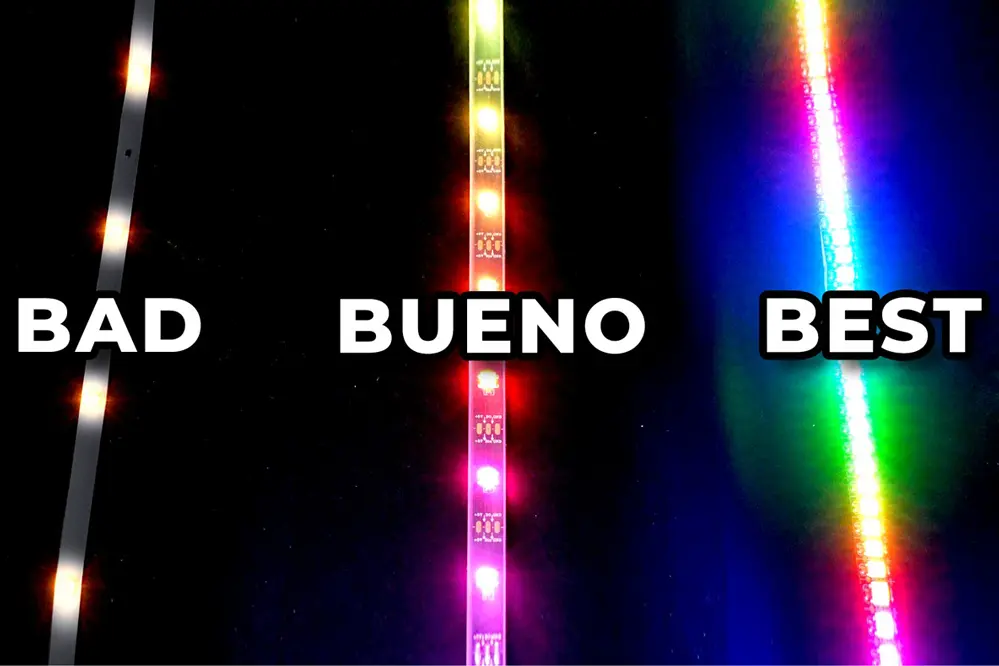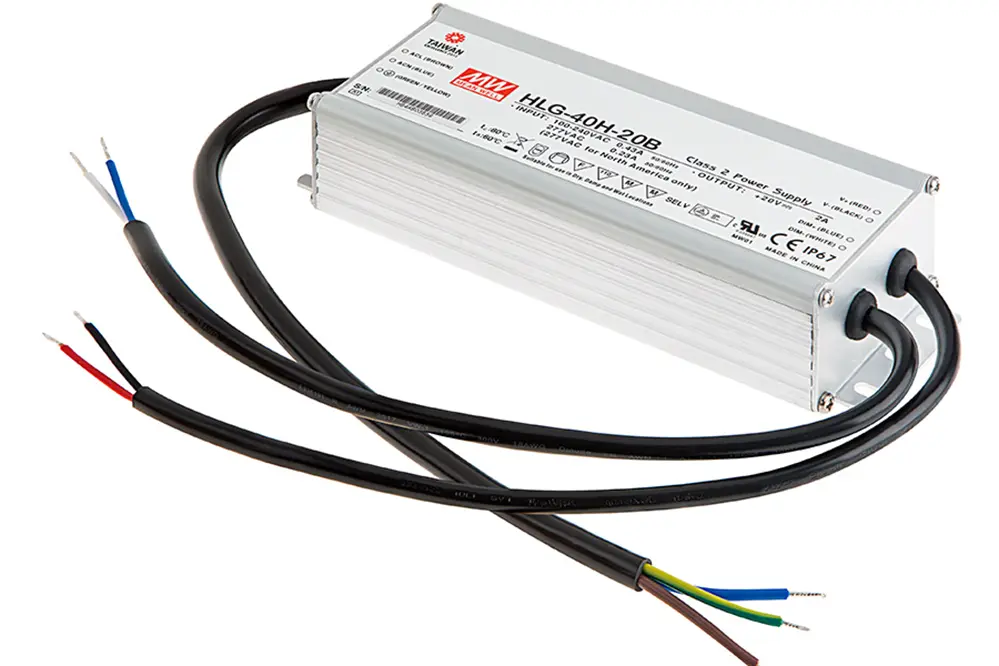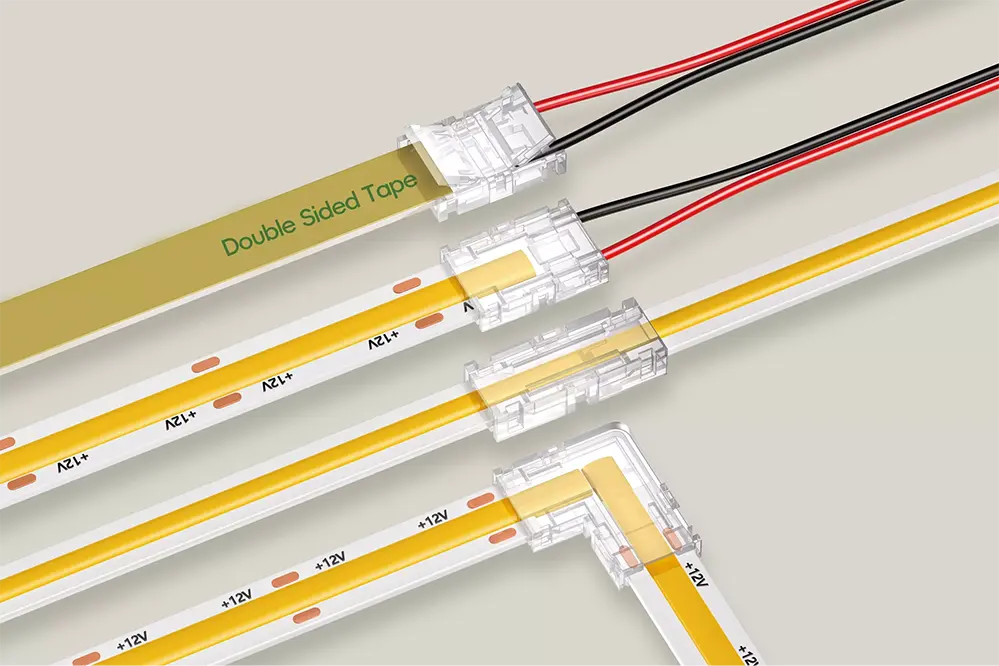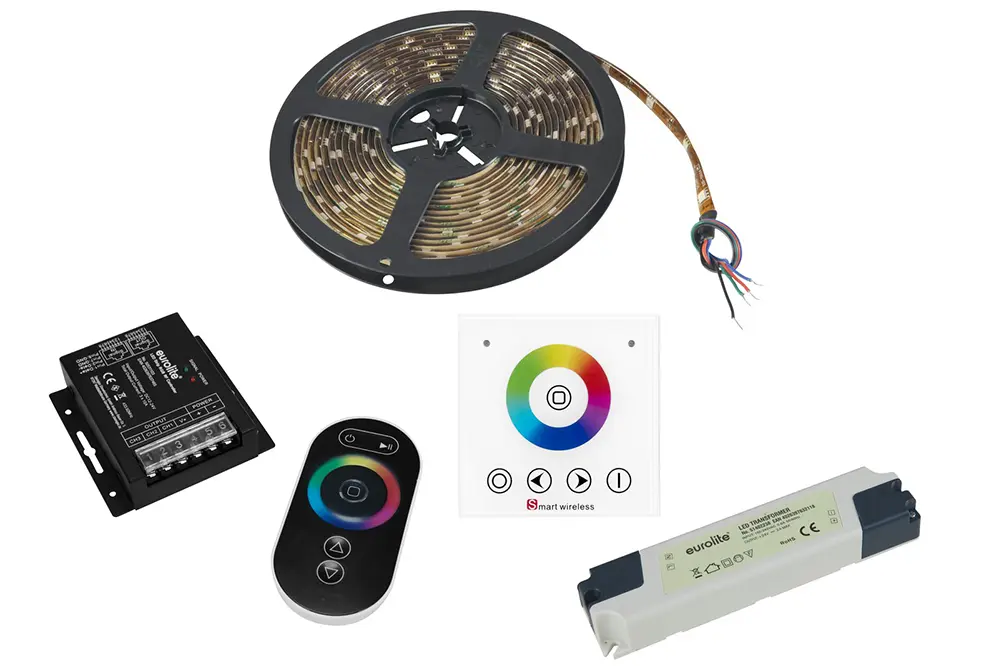Are your LED strip lights betraying you by showing unexpected colours? Fixing LED strip color issues is a common challenge that many face. Often, users are puzzled by the sudden shift in hues, attributing it to faulty products or complex technology. However, the reality is that these issues are frequently due to simple errors in setup or maintenance.
Understanding the significance of this topic is essential, as LED strips are integral to modern lighting design, offering flexibility and creativity in personal and professional spaces. This guide will cover key points such as identifying common causes, implementing effective troubleshooting techniques, and maintaining optimal performance.
Dive into this comprehensive exploration and equip yourself with the knowledge to keep your LED lights shining perfectly.
Identifying Color Issues
Begin by observing any irregular behavior.
LED strip colour issues often manifest as incorrect colour outputs or unexpected colour changes. The first step is to inspect the basic connections to ensure everything is secure and functioning properly. Sometimes, what appears to be a complex malfunction is simply a result of loose or faulty connections.
The importance of checking the power supply cannot be overstated.
Make sure you ascertain whether all cords are correctly connected. This ensures that your LED strips receive adequate and stable electricity supply, which is essential to avoiding random color shifts or dimming that could mislead you into thinking there is a more severe issue.
In more technical instances, addressing color inconsistencies involves examining the software or controllers managing the lights. Updates or recalibrations may be necessary, reflecting the lightning-fast pace of new year technology and ensuring compatibility. Carefully following these steps provides a sound foundation for troubleshooting and overcoming your LED strip challenges.
Common Causes of Incorrect Colors

Incorrect color output in LED strips can often be attributed to a variety of straightforward, yet critical issues worth examining. One prevalent cause is the improper installation of the strips themselves.
If at any point during the installation, the LED strips have been misaligned or twisted, this can lead to incorrect color displays. Ensuring each segment is properly connected is essential.
Another frequent issue involves the power and data lines. Anomalies in color output may stem from a lack of synchronization, resulting from a mismatch between the power supply voltage and the strips’ requirements. Confirming voltage compatibility is crucial for optimal performance.
Lastly, issues within the control system often manifest as unpredictable color shifts. This might be due to outdated software or firmware in the controller that directly influences the LED operation. Regular updates can mitigate these issues. Investing time in these troubleshooting efforts not only extends the life of your LED setups but reinvigorates their dazzling potential, ensuring every hue projects vivid and precise brilliance.
Checking Power Supply

The power supply is the heartbeat of your LED setup, influencing the quality of illumination, and can often be a source of color discrepancies.
Adequate voltage and current output are crucial for correct color rendering.
If the power supply is insufficient, your LED strips might suffer from inconsistent brightness levels or exhibit hues a shade off from their intended colors, resulting in a less vibrant, comprehensive display experience. Ensure the rating of the power supply matches or exceeds the collective requirement of the connected strips.
Moreover, intermittent power issues can sometimes cause the LED strips to cycle through colors unpredictably or appear as a mere shadow of their true intensity. A simple solution could be to “reboot” your setup by unplugging; it’s a fundamental yet powerful step in troubleshooting. In such cases, checking the power supply’s compatibility and integrity can set the stage for that enchanting ambiance you envisioned.
Inspecting LED Strip Connections

The journey to flawless LED strip performance begins with inspecting the connections that bind your system together.
Initially, one must ensure that each strip is properly aligned within its allocated connectors, verifying the secure engagement and correct polarity—a small adjustment could lead to a world of difference in output colors. Sometimes, incorrectly aligned or loosely connected strips cause the lighting to manifest unexpected blue, red, or green colors, which compromise the intended visual cast. Employ a gentle touch as you probe these delicate interconnections to maintain their integrity.
Moreover, assess whether the connectors or interconnecting cables show signs of wear or corrosion. If such conditions exist, they can lead to impaired performance. Consider replacing any distressed components to restore the vibrant glow and fidelity of color that your space deserves.
Finally, be mindful of any obstructions or debris that might sneak into the connectors and wreak havoc on the connectivity. With attention to detail, clearing obstructions, and validating connections, you’ll bolster the reliability and harmony of your LED strip colors. By prioritizing these seemingly minor tasks, you dramatically enhance the longevity and color accuracy of your lighting installation, reinforcing a radiant atmosphere that speaks to your meticulous craftsmanship.
Verifying Controller Settings

When troubleshooting LED strips with incorrect color output, checking your controller settings is of paramount importance. Often, a subtle misalignment might trigger unintended color shifts.
Start by ensuring the correct settings are applied to your controller, focusing on color configuration.
Many LED strips use a spectrum of RGB or RGBW configurations, so verifying colour mode selection (like dynamic or static) is essential.
This ensures there is no mismatch between the controller’s signal and the LED strip’s capability, rectifying many color issues.
Regular software updates or adjustments made by accident can toggle settings unknowingly, so continually check your controller for system updates and ensure they’re calibrated to match your current setups.
Remember, even the best of systems isn’t immune to occasional errors. Optimizing your controller settings empowers you to harness the true potential of your lighting masterpiece.
Correcting LED Strip Wiring
Accuracy matters with LED strip wiring configurations, ensuring each colour is correctly represented.
Embark upon verifying every connection, as improper wiring can lead to puzzling colors and potential voltage drop. The crux of ensuring correct red, blue, or green color output lies in a meticulous examination of wire alignments, noting if any color wires are mistakenly swapped. Furthermore, pay attention to the condition of connecting terminals to prevent erratic behavior.
The correct alignment is vital for seamless color output.
Pay special attention to common color issues—red showing as blue, green appearing differently, or any such differing hues—and track the wiring connections to ensure they align with the manufacturer’s specifications. This crucial verification can often solve color mismatches.
By verifying and correcting slight deviations within your wiring setup, you promote an aligned and harmonious visual experience, ensuring each LED glows as intended. This endeavor not only rectifies present issues but spurs the creation of vibrant displays that reflect the artistic vision initially imagined, reinforcing the value of dedication and technical precision.
Replacing Faulty LEDs
Identify faulty LEDs precisely with a multimeter reading.
Once you’ve determined which LEDs are malfunctioning, it’s time to act. A gentle hand in removing the defective component is paramount to avoid damaging the circuitry. Carefully note the current position of each defective LED to ensure the replacement is aligned correctly. Meanwhile, guidance on the precise process of extracting the non-functioning unit with minimal system disruption ensures a smooth transition to pristine illumination.
Consider getting similar LEDs from reputable suppliers.
Before replacing, gently desolder the faulty LED with precision. A soldering iron provides the heat necessary to release the problematic LED from its position—enabling seamless integration of the new unit. It’s also imperative to apply new solder judiciously, ensuring systemic consistency.
Embrace this opportunity to enhance your setup by integrating environmentally sustainable options whenever possible. As technology evolves, so does the chance to choose more efficient, robust components that not only solve immediate issues but also benefit future applications. By continually aspiring for excellence, your LED strip endeavors will look and perform thrillingly new while contributing positively to broader environmental goals.
Fixing Issues with Remote Control
Is your LED strip remote control not responding or sending incorrect signals to the lights?
Several factors can cause these remote control issues with LED strips, ranging from depleted batteries to signal interference. Begin by inspecting the batteries; weak batteries often result in insufficient power delivery to the remote.
If replacing the batteries doesn’t resolve the issue, check for obstructions between the remote and the LED strip receiver. Ensure a clear line of sight, as physical barriers can impede infrared signal transmission, causing erratic control behavior.
Additionally, verify that the remote and the receiver are both set to the correct frequency and mode to ensure the remote sends the correct colour signals. Mismatched settings can result in the remote sending incorrect signals, leading to unexpected color changes or unresponsiveness, which are common issues addressed in troubleshooting LED strips how to fix wrong color output or LED strip turning different colors.
With these troubleshooting steps, your remote should restore vibrant color control, allowing you to relish in the lively ambiance created by your LED strip.
Troubleshooting External Interference
External interference can sometimes cause LED strips to behave unpredictably, such as flickering, changing colors, or responding differently than expected. Fortunately, identifying and mitigating interference sources can restore optimal performance.
Radio frequency interference is a common culprit impacting LED strip behavior. Nearby electronic devices may inadvertently cause disturbances.
Devices, including routers and wireless speakers, often emit signals on similar frequencies, which can interact with LED controllers. Relocate these devices if issues persist.
Moreover, ensure that the power supply and grounding system are intact and properly connected. Faulty electrical connections might amplify interference effects and affect the colour output of your LED system.
Implementing quality shielding or using ferrite beads around the power cables can further mitigate potential interference, ensuring that colour consistency is maintained in your LED display. This ensures a steady, harmonious operation where LED strips remain vibrant and reliable.
Explore these strategies, and soon your LED installations will illuminate the space in a vibrant red and green hue, free from external disruptions, enriching your environment with seamless colour transitions.
Adjusting Color Calibration

Color calibration is crucial for precision.
When LED strips display incorrect hues, it often points to calibration discrepancies. The first approach to tackle these anomalies is by accessing your LED controller’s settings, especially if it offers an RGB color wheel. Systematically, navigate to this tool to recalibrate the desired colors, ensuring the output matches your original intent.
Carefully adjust the red, green, and blue sliders.
Such adjustments can be transformative – akin to recalibrating a projector for perfect image presentation – resulting in a more accurate representation of your chosen palette. Sometimes, manufacturers offer pre-defined color profiles; exploring these options can streamline the calibration process.
By consciously honing color calibration, you unlock the full potential of LED strips, wrapping your space in the intended ambiance. With our strides in recent years of technology, these easy fixes can revitalize your LED display, enhancing your living space with the vibrancy and energy it deserves.
Preventing Future Color Problems
Regular maintenance can avert many common issues.
Consider investing time now in simple checks. For instance, ensuring connections are snug and free from dust not only enhances performance but also aids in maintaining color integrity, especially for vibrant blue hues in your LED displays. Likewise, a consistent power supply diminishes the chances of voltage fluctuations that could alter color output unexpectedly.
Update firmware on modern controllers regularly.
Firmware updates typically include optimizations and bug fixes that address potential color issues. By keeping your LED strip systems up-to-date, you harness technological advancements, ensuring your strips function at their peak performance without unexpected color variations.
Lastly, employing advanced tools or applications for monitoring LED strip health can be instrumental in preemptively identifying lurking issues. These solutions, more prevalent in recent years, provide a proactive approach to maintenance, conferring users the foresight needed to preserve the luminous brilliance and intended aesthetic of their lighting systems.
Seeking Professional Assistance
Sometimes, complexities require expert solutions.
If you’ve exhausted all DIY avenues and your LED strips still misbehave, seeking professional help is a prudent choice. Professional technicians possess the intricate knowledge necessary for diagnosing complex issues, making it an efficient investment to resolve those stubborn problems. Moreover, professionals are often up to date with the latest innovations and solutions in the LED arena.
Their expertise ensures thorough and reliable remedies.
Engaging a professional does more than restore functionality—it can enhance it. By entrusting the situation to experienced hands, you’re not only fixing what’s wrong but also safeguarding against future disruptions with more informed upkeep strategies.
Pursuing professional assistance often leads to enlightening discoveries and expanded understanding of LED systems, which, by extension, further enrich your user experience. This engagement not only results in a flawlessly functioning system but also empowers you with valuable insights, cultivating an environment where vibrant lighting solutions flourish without restraint.
Conclusion
Addressing LED strip color issues presents an opportunity for creativity and innovation. By understanding the underlying causes and effective troubleshooting methods, you can enhance your lighting experience with precision and sophistication.
Learning and applying practical solutions ensures that your lighting setup remains both efficient and visually stunning. Whether through DIY interventions or expert advice, each step taken to resolve color discrepancies builds confidence in managing complex systems.
Ultimately, this journey not only boosts your technical skills but also deepens your appreciation for modern lighting possibilities, merging functionality with artistry to create dynamic and pleasing environments.





